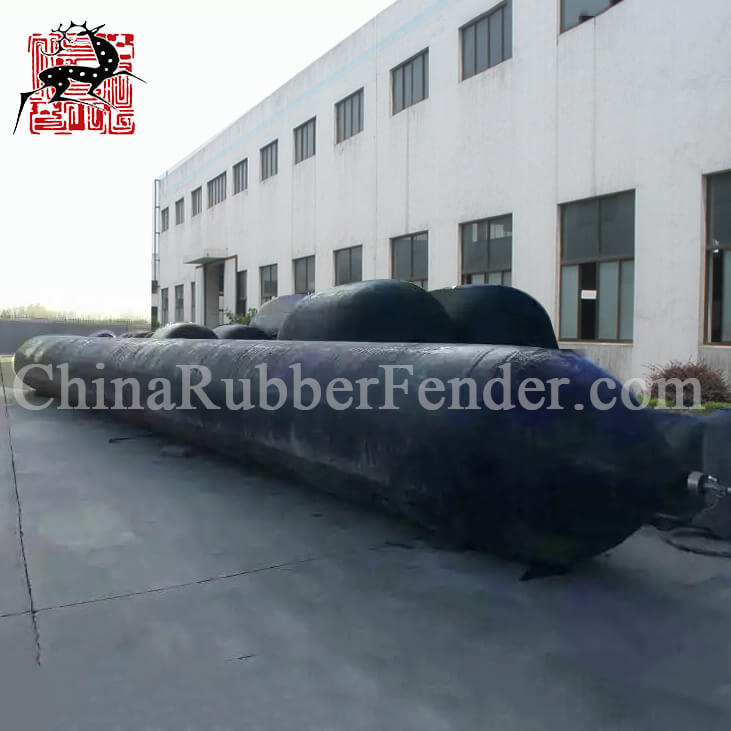New applications of airbags for shipping in the marine field
The airbags for shipping device is China’s first ship launch vehicle, but the applications of airbags in the maritime field is almost in a blank state. By analyzing and discussing the application and challenges of airbag devices in assisting ship navigation and maritime accident rescue, we can provide ideas and suggestions for solving related problems, save the required human resources and material resources, and reduce property losses and human casualties.
Applications of airbags for shipping in maritime accidents rescue
-
Ship stranded or damaged
The stranding of a ship means that the ship is placed on obstruction and cannot navigate. The obstruction includes reefs, shoals, sunken ships, and other underwater objects that hinder the navigation of the ship.
After the ship ran aground, it is unable to separate by itself, and airbags can be placed around it to inflate the airbags to provide buoyancy, reduce the ship’s draught, and make it detach from the resting place with the assistance of the airbag device. When the ship is resting on a shoal or reef, the marine airbag device can provide buoyancy and support for the ship, prevent the ship from tilting and cause secondary damage to the hull, and assist the ship to go shallow.
At the same time, the airbag device can effectively compensate for the buoyancy loss of the ship when the ship is damaged and flooded and cannot maintain stability and upright buoyancy at sea or in port waters. In the case of less external assistance, the ship can rescue itself and leave the accident water area as quickly as possible to avoid traffic congestion in the water area.
-
Sunken ship salvage and towing
The buoy salvage method is a common method to salvage large sunken ships. Generally, the buoy is a steel buoy. Although the steel buoy has a large buoyancy, its volume and deadweight are relatively large, which is inconvenient to carry. In the process of salvaging a sunken ship, due to the special underwater environment, the tie-down connection between the ship and the buoy will consume a lot of manpower and time.
The salvage of large sunken ships has higher requirements in terms of buoyancy and stability control, and it is particularly important to control the floating speed and attitude of the sunken ship. Some airbag devices are equipped with pressure telemeters at the end iron parts, which can detect the internal pressure and external water pressure of the airbag, which provides an idea to ensure the safe floating of the sunken ship.
When the sunken ship is salvaged out of the water and towed by a tug to leave the accident waters, airbag devices can be attached to both sides of the accident ship to increase the buoyancy of the ship, and adjust the ship’s floating state according to the loss of stability to reduce the manpower and material resources required for handling the accident.
Applications of airbags for shipping in navigation
In order to reduce the shaking in strong winds and waves, some ships use fin stabilizers to assist navigation, but the installation of fins is not only expensive but also causes irreversible changes to the hull structure and affects the navigation performance of the ship. The ship airbag device is convenient to carry and low in cost. It can not only play the role of fin stabilizer but also provide buoyancy for the ship, thereby increasing the stability of the ship and assisting the ship’s navigation.
Ships sailing in shallow water will have a shallow water effect, increase resistance, cause the hull to sink, increase wave-making, and even small ships will roll over and capsize. When some deep-draft ships have limited draught under full load and cannot ride tides, airbag devices can be used to float the ship and pass-through channels with insufficient water depth.
In the Jiangsu section of the lower reaches of the Yangtze River, there are many sand boats and barges launching into and out of the water with very low freeboards. If there are a slight wind and wave on the river surface, the ship may sink. The airbag device can provide reserve buoyancy for the barge, release it into the water when the navigation environment is harsh, increase the buoyancy and stability of the ship, and reduce the risk of accidents.
(Article source from China Water Transport)


